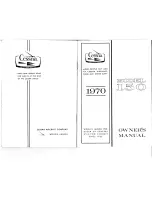
BASIC FLIGHT TECHNIQUES
EN
09
08
Wing
To prepare the wing, lay it out on the top surface and perform a thorough daily check. You should inspect
the top and bottom surfaces for any rips and tears or any other obvious signs of damage. Lay out the lines
one side at a time, hold up the risers and starting with the brake lines, pull all lines clear. Repeat with the
stabilo, D (uppers), C, B and A lines, laying the checked lines on top of the previous set, and making sure
no lines are tangled, knotted or snagged. Mirror the process on the other side and then inspect the lines
for any visual damage. Then inspect the risers for any signs of obvious damage. The general rule is if it
looks OK then it is OK, however if you have any doubts please get advice from experienced pilots or your
local dealer or instructor.
To familiarise yourself with the glider it is a good idea to perform practice inflations and small flights on a
training hill. This will enable you to set up your equipment correctly.
Take-off checklist:
1. Check reserve parachute - pin is in and handle secure
2. Helmet on and fastened
3. All harness buckles closed - check leg-loops again
4. Karabiners and maillons tight
5. Accelerator system connected
6. Holding the A risers and your brake handles correctly
7. Leading edge open
8. Aligned in the middle of the wing and directly into wind
9. Airspace and visibility clear
IMPORTANT
Never take off with
a glider that is not
fully inflated or if you
are not in control of
the pitch/roll of your
wing.
Launching
Your Alpina 3 will launch with either the forward or reverse technique. The wing should be laid out in a
pronounced arc, with the centre of the wing higher than the tips.
Forward Launch
-
Nil to Light winds
When the wind is favourable, whilst gently holding the A risers move forward positively, your lines should
become tight within one or two steps and the Alpina 3 will immediately start to inflate. You should maintain
a constant pressure on the risers until the wing is overhead. Do not pull down or push the risers forward
excessively, or the leading edge will deform and possibly collapse making taking-off more difficult and
potentially dangerous.
Move smoothly throughout the entire launch, there is no need to rush or snatch at it. You should have
plenty of time to look up and check your canopy before committing yourself. Once you are happy that the
Alpina 3 is inflated correctly, accelerate smoothly off the launch.
Reverse Launch
-
Light to Strong Winds
Lay out your wing as you would for the forward launch. However, this time turn to face it, passing one
entire set of risers over your head as you turn. Now you can inflate the glider with your body weight and
the A-risers. Once the wing is overhead, release the risers, brake gently if necessary, turn and launch.
In stronger winds, be prepared to take a few steps towards the glider as it inflates. This will take some of
the energy out of the glider and it will be less likely to overfly you. This reverse-launch technique can be
used in surprisingly light winds too.
Speed to Fly
Flying at trim speed (hands-up), the Alpina 3 will achieve its ‘best glide’ speed for still air. You should fly
at this speed when gliding downwind or when the air is not excessively sinking. For better penetration in
headwinds and improved glide performance in sinking air, crosswinds or headwinds, you should fly faster
than trim speed by using the accelerator system. Using up to half bar does not degrade the glide angle or
stability significantly and will improve your flying performance. You will reach the next thermal faster and
higher. At full speed the Alpina 3 is stable, however we recommend that you do not fly at full speed close
to the ground or in turbulent air.
Summary of Contents for Alpina 3
Page 1: ...Pilots Manual...
Page 2: ......
Page 20: ...1258 Route de Grasse Le Bar sur Loup 06620 France...






































